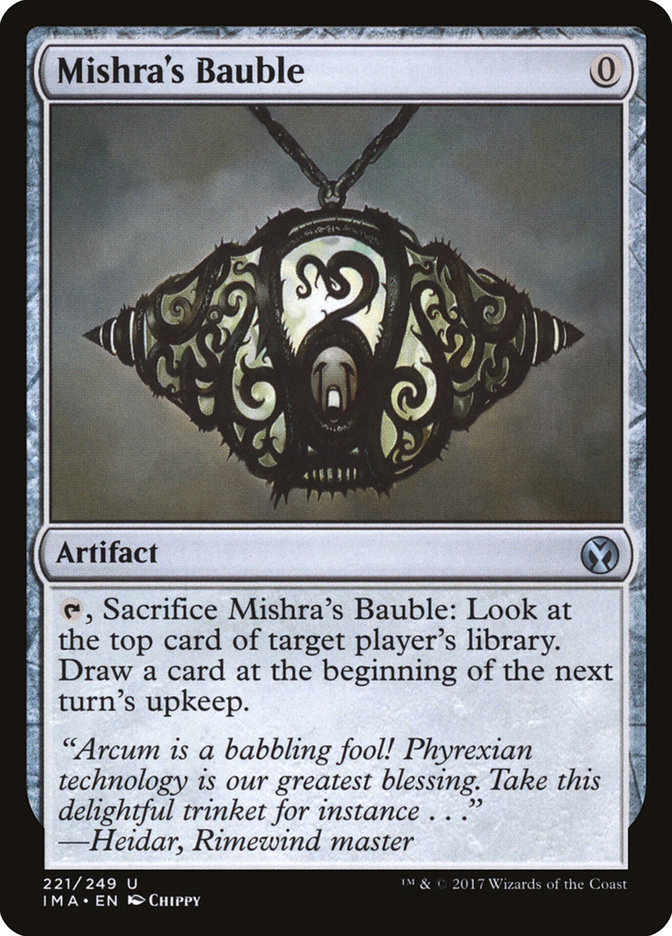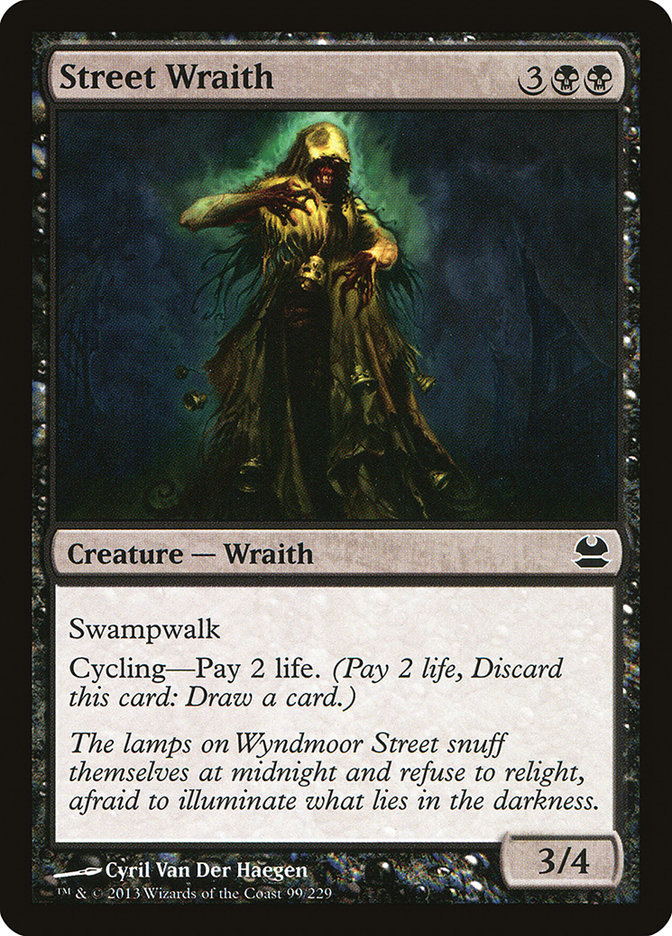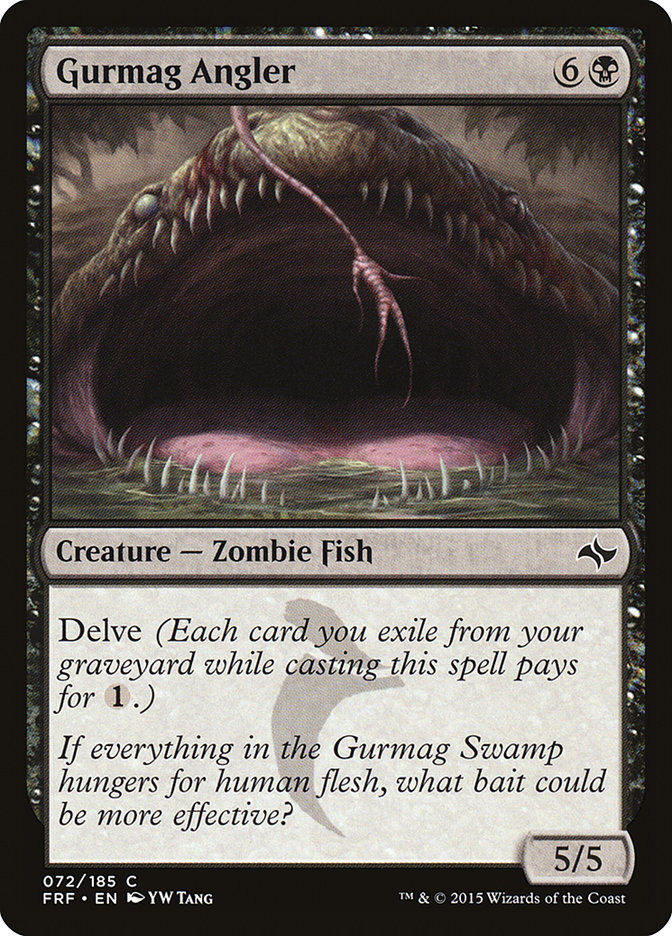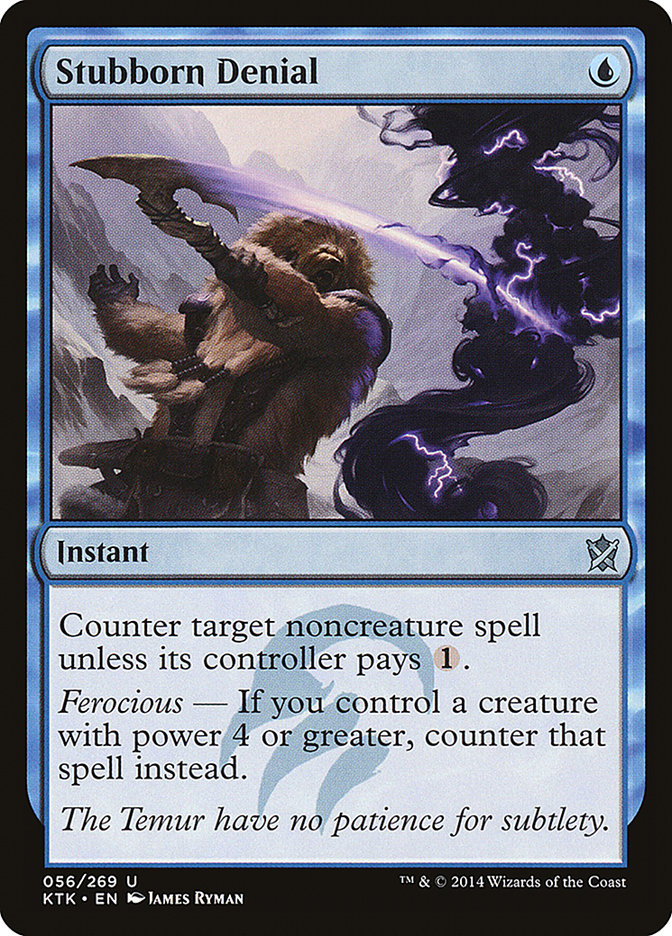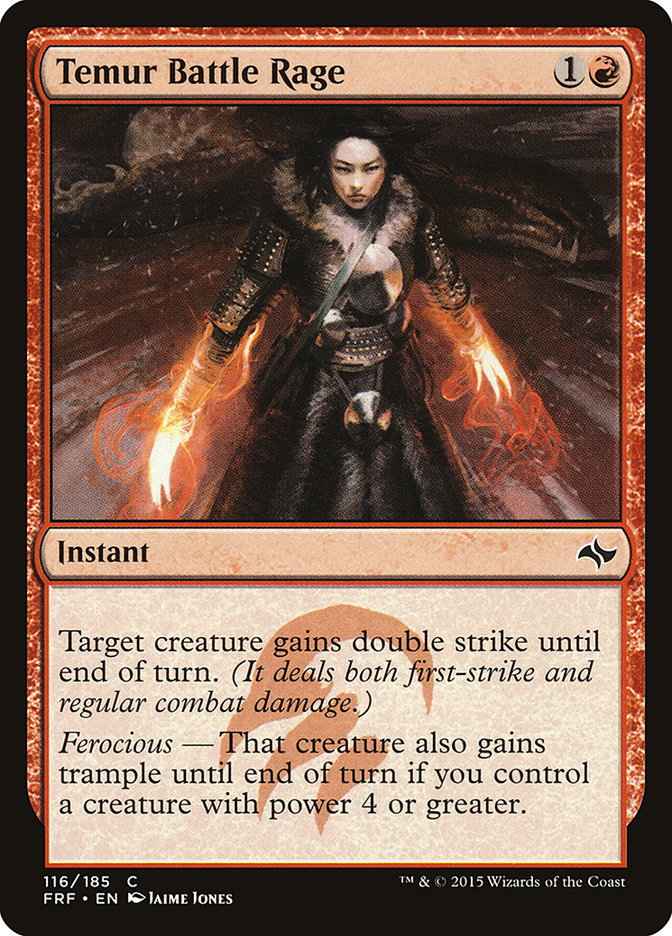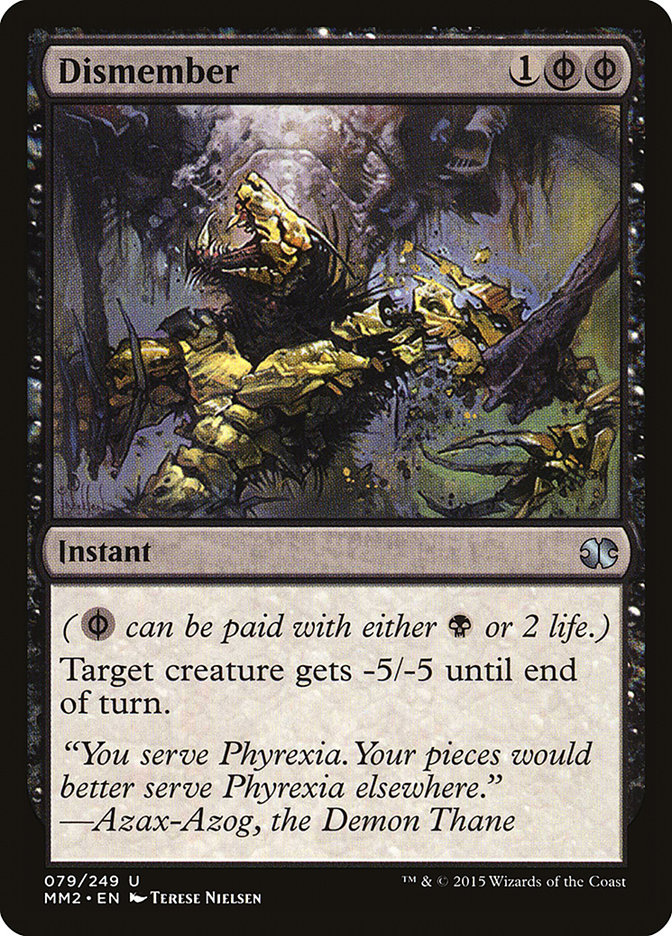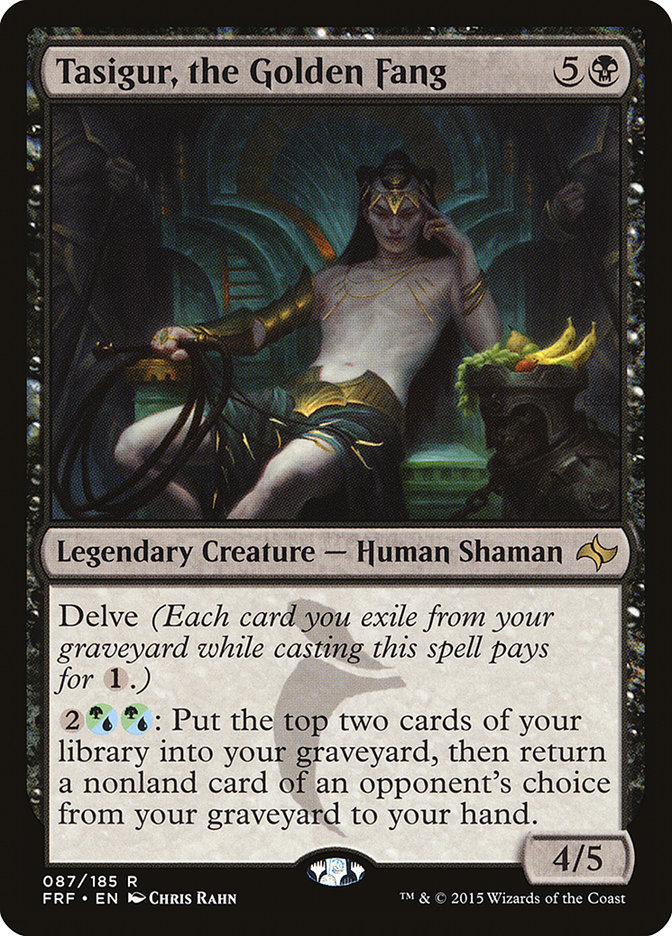It’s good to be back.
For those of you who are in the market for a more thorough introduction, my
name is Ben Friedman, I’m a longtime competitor on both the Pro Tour and
the SCG Tour, an erstwhile writer for this very site, a perpetual passenger
on the tail end of the “gravy train” of both circuits, and an occasional
victor in some of the high-pressure matches of Magic that came along with
earning those credentials. I’m also, incidentally, a proud member of Team
MGG at Grand Prix and StarCityGames.com tournaments, and an aficionado of
fine cowboy hats, Hawaiian shirts, and Snapcaster Mage, in that order. Some
of my first written words about Magic were published on StarCityGames.com,
so you can imagine my excitement at the opportunity to share my thoughts
here once again.
That excitement, however, has been tempered in recent days by my
disappointment at the lack of recent innovation within my favorite
archetype right now, the once and future boogeyman of Modern: Grixis
Death’s Shadow. Modern is, to borrow an overused phrase from a classic
film, the Cadillac of contemporary competitive Magic. It’s everywhere, it’s
exciting, and it’s unpredictable. Some people, pros even, won’t play
Modern. They simply can’t handle the swings. And who can blame them? In a
format where you’re as likely to stare down a Goblin Guide as a Lantern of
Insight, a Cranial Plating, or an Urza’s Tower, it can be hard to be
prepared for everything. Playing Modern is like walking a tightrope with no
safety net below. Folks who fancy themselves “experts” hate that
kind of uncertainty. They want to insulate themselves in the warm blanket
of consistency, with universally-applicable reactive cards that allow them
to focus on answer sequencing, rather than answer selection. Modern
challenges them to walk that tightrope, and although it is a decidedly
high-variance format, the reward is that it is also a high-skill-gap one.
Take that to heart. Modern is undoubtedly high-variance, but the skilled
players hold massive advantages over the mediocre ones. Compared to Legacy,
which has Brainstorm, Ponder, and Force of Will to ameliorate inconsistency
and wrong-answer syndrome, in Modern you’re significantly more likely to
wind up at the mercy of the top cards of your deck to decide your fate.
However, the huge and constant influx of new blood in Modern means that
there will always be a massive cohort of less-experienced players, which is
less and less true of Legacy these days.
What then, is the solution for a would-be Modern aficionado who bemoans the
perceived “lack of skill” based on anecdotal evidence from the most
egregiously one-sided games? (Troll answers like “git gud”
notwithstanding.)
The solution is both breadth and depth. Become a skilled pilot of a handful
of strong, disparate archetypes, but a master of one. I’ve alternately
played various Eldrazi decks, Dredge, Collected Company, and Death’s Shadow
over the past year, with the ability to pick up any one of them that I
predict will be well-positioned for a given metagame; however, the bulk of
my practice and innovation lies with Death’s Shadow, the archetype with the
highest combination of power, consistency, flexibility, and resilience. The
deck can win as early as the third turn with several discard spells to
clear the way, and it can grind out opponents with Snapcaster Mages. It
plays the lowest curve in the format with a high number of cantrips to
improve consistency and turns drawbacks on cards like Thoughtseize and
Watery Grave into benefits with its namesake creature. The deck functions
like a Modernized version of Legacy’s own Grixis Delver, and the rewards
for playing it well are manyfold. Why, then, is it so maligned by a number
of prominent Magic personalities? Folks on social media call it
“overrated,” but they’re falling into the same trap that ensnares so many
Modern haters. Simply put, they have turned to denigration rather than
innovation.
It’s easy to look at one version of a deck and view it as the final form of
that archetype. The lazy eye sees a nineteen-land version of Grixis Death’s
Shadow with few copies of Stubborn Denial, no maindeck Temur Battle Rage,
two copies of Tasigur, the Golden Fang, two Terminates and an outdated
cantrip set, and writes the deck off as “disappointing.” As Michelangelo
once said, “Every block of stone has a statue inside it and it is the task
of the sculptor to discover it.” Well, I have sat at my desk carving away
at Grixis Death’s Shadow, and this marble slab has a much better inner form
than the stock lists would have you believe.
The first piece of waste that must be chipped away is the fallacious belief
that the deck needs nineteen lands. The deck floods when the pilot draws
more than three mana sources, so just as rapper O.T. Genasis recommends in
his seminal hit song, I needed to cut it. First, I went down to eighteen
lands, then seventeen. At Grand Prix Oklahoma City, I went all the way down
to a smooth sixteen lands with four Mishra’s Baubles and four Street
Wraiths, and I did not regret it one bit.
Bauble, in concert with fetchlands, composes the equivalent of a zero-mana
Opt, and most hands with a single fetchland and a Bauble are solid keeps.
Incidentally, Bauble enables more combinations of opening hands that lead
to turn 2 Gurmag Anglers, which is always desirable. Two fetchlands, a
Mishra’s Bauble, a Street Wraith, and any pair of one-mana spells makes for
a second-turn one-mana Gurmag Angler. Compare this to previous builds,
which needed to cast an early Thought Scour to turn on the possibility of a
turn-2 Zombie Fish. Playing more than seventeen lands without a good way to
mitigate mana flood will lead to disaster.
The next step to sculpting Death’s Shadow is to recognize that Modern is a
format with dangerous topdecks, and there is exactly one card that Grixis
Death’s Shadow gets to exploit to try to shut the door on topdecks.
Stubborn Denial is a perfect card for this deck, as the absolute best way
to protect a Death’s Shadow from Fatal Pushes and Path to Exiles, or to
protect your face from a flurry of Lightning Bolts against Jeskai or Burn.
Thoughtseize and Inquisition of Kozilek are great cards, but they only do
half the job. Stubborn Denial is the card needed to hold up the latter half
of the game, buying you time to run in for the kill with your oversized
creatures.
Speaking of cards for the latter half of the game, the one you actually
want is unlikely to be the one you are playing right now. Kolaghan’s
Command is simply too slow, too low-impact, and too reactive to be worth
the slot when Temur Battle Rage can end the game on the spot and
put the fear in your opponent to force them to play suboptimally. One
maindeck Temur Battle Rage is necessary, and two is perfectly reasonable.
This is how you pummel combo decks like Storm, Ad Nauseam, Dredge, Burn,
and TitanShift. This is what puts Grixis Death’s Shadow in the seat of
“format fun police” and forces opponents to respect it. The combination of
a single Death’s Shadow, a Stubborn Denial, and a Temur Battle Rage is
usually enough to win against formerly bad matchups like Dredge and Burn,
which is astonishing in its elegance. The implications of more copies of
Temur Battle Rage and the desire to become something akin to the Legacy
Infect deck trickle down to inform the last few card slots, both of which
are huge upgrades over the stock choices.
The first one is Terminate. If you are still playing Terminate in 2018, you
are making a mistake. Dismember is almost universally better than the
two-mana, two-color spell. Dismember pumps Death’s Shadow. Dismember costs
one mana when you need it to. Dismember can even be pain-free if you need
to conserve your life total, which does come up on occasion. The only cards
that demand a Terminate instead of a Dismember are Primeval Titan (which
already often does its damage from the enters-the-battlefield trigger),
Wurmcoil Engine (which still often spells game over even if you do kill
it), and opposing Death’s Shadows and large Tarmogoyfs (which you have
Fatal Push for regardless). The reduced color requirements are just icing
on the cake. Two Dismembers and two Temur Battle Rages go together like
peas and carrots.
The second one is Tasigur, the Golden Fang. Gurmag Angler is a four-turn,
rather than a five-turn clock on a naked battlefield. Gurmag Angler stands
up to 4/5 Tarmogoyfs and opposing Tasigurs, rather than bouncing off of
them, plus Gurmag Angler blocks Reality Smasher, rather than dying to it.
With a maindeck plan designed to kill opponents quickly and not dawdle
around with spending piles of excess mana to gain incremental value, you
need to be playing four Gurmag Anglers and zero Tasigurs. Even a
three-to-one split is preferable to the stock choice of two and two.
Alright, alright. Enough piecing it together. Here is my most recent list
for Grixis Death’s Shadow, ready for battle at SCG Columbus.
Creatures (16)
Lands (17)
Spells (27)

A few notes on choices for the sideboard:
Engineered Explosives is simply a stellar card. From Humans to Lantern to
G/W Hexproof to Merfolk to Elves to Affinity to Empty the Warrens out of
U/R Gifts Storm to many of the different Lingering Souls-based decks, there
is no better flexible answer that can potentially gain massive value in the
right spots. Don’t sleep on EE.
Rakdos Charm covers Dredge, Affinity, Lantern, and Living End, with
possible applications against Tron decks. It’s a better choice right now
compared to Kolaghan’s Command because of the graveyard applications as
well as the lower mana cost (which is significant against Affinity). The
grindy nature of K Command is less important now.
Izzet Staticaster is strong against Noble Hierarch decks, Dredge, and
Lingering Souls. Liliana, the Last Hope is sort of like an Izzet
Staticaster, with better applications against Five-Color Death’s Shadow,
specifically. It’s better because if the opposing Shadow player isn’t on
the Souls plan, Liliana can start gaining value; whereas an Izzet
Staticaster would be useless in that spot.
Collective Brutality is for Burn and Company decks. Kozilek’s Return is for
many of the same matchups as Engineered Explosives. Liliana of the Veil is
incredible against the mirror and against control decks and offers an
all-in-one-card gameplan when the opponent sideboards in a half-hate card
like Rest in Peace or Runed Halo. It also helps mitigate flood by allowing
you to pitch excess fetchlands. It’s so powerful that it might be
maindeckable as an alternative plan to the “kill ’em fast with Battle Rage”
high-level strategy.
Now, just because there are a few innovations that seem clear in retrospect
does not mean that everything is finalized with this list. For one, an
influx of Tron and/or Valakut decks may necessitate the inclusion of a
Disdainful Stroke or perhaps a Ceremonious Rejection in the sideboard. It’s
also perfectly reasonable to want an Inquisition of Kozilek or two back in
the maindeck, which would require possibly dropping another Opt or a
Mishra’s Bauble. Of course, as previously mentioned, Liliana of the Veil is
the three-mana spell of choice, should one decide to play a less proactive
gameplan in game one. Compared to the old stock maindeck choice of
Kolaghan’s Command, a straight replacement with the three-mana planeswalker
would be extremely wise. Liliana is the key card in the mirror, additional
removal to supplement the six one-mana removal spells, and a way to
mitigate mana flood or “drawing the wrong half of your deck” syndrome
against control or certain linear decks. Even a Lightning Bolt or two could
be potential additions that would serve dual purposes of additional cheap
removal while providing a nice way to cheese out an opponent in the mirror
match.
It should be clear, even with respected stock lists, that innovation with
established archetypes in Modern is as crucial as innovation with newer, up
and coming decks. And if the process of tweaking and tuning the best deck
in Modern seems too laborious at times, Michelangelo has a quote for that
as well.
“The true work of art is but a shadow of the divine
perfection.” Emphasis mine.



